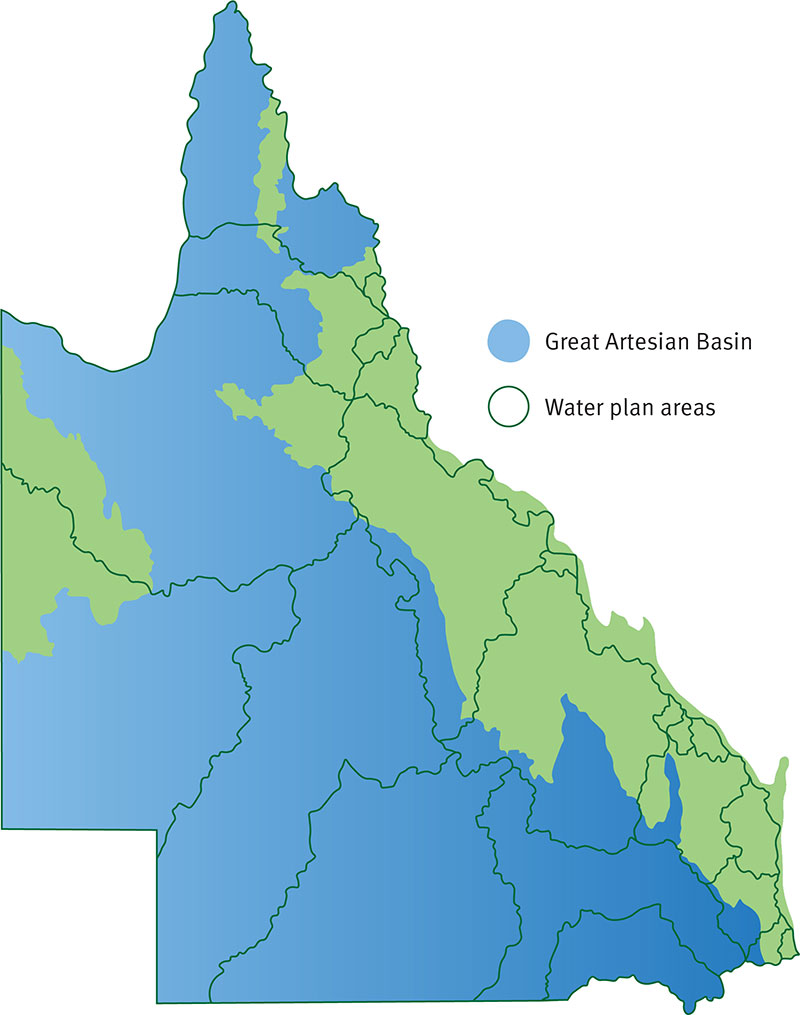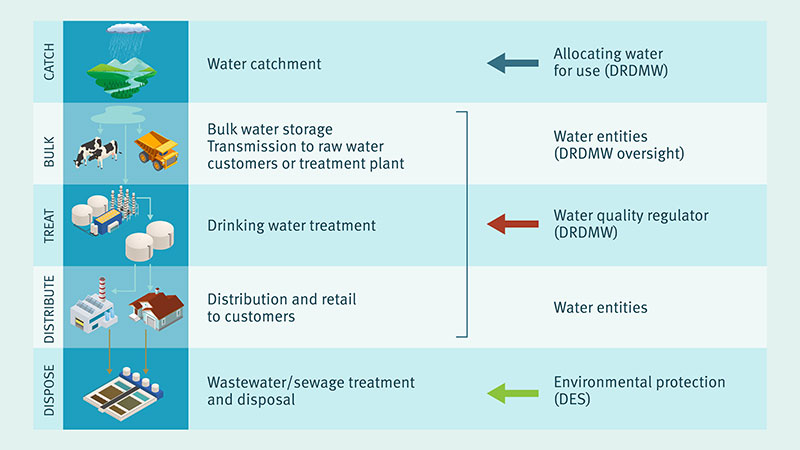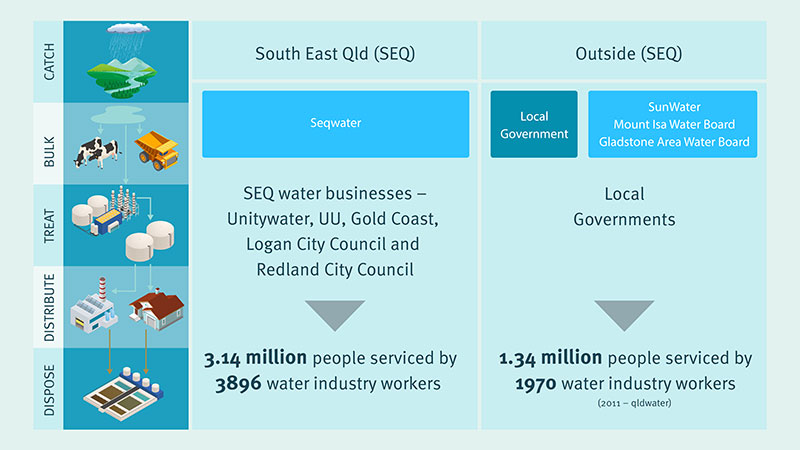How Queensland’s water system works
Water is a precious resource for all Queenslanders: it preserves our environment, sustains our communities and is a vital input for the farming and mining industries which are the backbone of our rural economies.
Our role in regulating Queensland’s water resources involves working closely with First Nations peoples, landholders, irrigators, water service providers and other stakeholders.
We focus on the following key areas to deliver sustainable management of our water resources:
- Water planning that balances the needs of water users and the environment
- Ensuring the people of Queensland have access to safe and reliable drinking water and recycled water supplies
- Improving water security for both drinking and non-drinking purposes
- Facilitating efficient water markets to stimulate economic development in regional communities
- Ensuring the safety of dam infrastructure and downstream people and property
- Enabling fairness, transparency and accountability of water systems through high-quality data collection and visibility
Water in Queensland
Surface water dominates our water supply sources.
However, groundwater plays an important role as well, especially for inland areas of the state.
We also treat and recycle wastewater in Queensland which is used to irrigate community parks and gardens, as well as in industrial and agricultural applications. We also access other sources where they are available or needed, such as desalinated seawater.
Almost 7 million megalitres of water in Queensland is currently available for use across the state.
In addition to this, just more than 3 million megalitres of identified water is unallocated and set aside for future use.
More than half of the state’s water is used by the agricultural sector with irrigated agriculture worth nearly $4 billion.
Access to this water relies heavily on rainfall which is highly seasonal and varies considerably year to year. The dams and weirs located across the state help to get the most from these resources.
Queensland is divided into 23 water plan areas including the Great Artesian Basin which covers a large proportion of Queensland. The water plans aim to balance the needs of water users (e.g. towns, agriculture and other industries) and the environment at a catchment level.
Underpinned by science and community consultation, water plans meet cultural, social, economic and environmental outcomes specific to the catchment.

Roles and responsibilities
The Australian Constitution recognises the right to regulate a State’s water resource lies with the individual State.
Queensland’s regulatory framework for the management of water resources is established in the Water Act 2000, which provides the bases for catchment-based water planning.
The department has a lead role in allocating water for use within a catchment, regulating the quality of drinking water treatment and overseeing the storage and distribution of water.
Queensland’s dams, weirs, treatment plants and other infrastructure are generally owned and operated by government owned corporations–Seqwater in South East Queensland and Sunwater elsewhere in Queensland. Seqwater is also responsible for long term water supply planning for South East Queensland.
In some circumstances, this infrastructure is owned by private entities such as mining companies and local councils.
Outside of South East Queensland, Sunwater owns most of the bulk water infrastructure.
For shared water resources like the Murray-Darling Basin, the Commonwealth Government and relevant State governments have special arrangements to work together to ensure efficient and sustainable water management.

Bulk water supply
In South East Queensland there are 5 providers of water and sewerage services across the 11 local council areas, who buy treated bulk water from Seqwater and provide water to homes and businesses.
Outside of South East Queensland, local councils are responsible for providing these services to households and businesses. Some of these councils own their own water supply infrastructure and are responsible for water supply planning for their region.
Some areas have local water boards which carry out a range of local water activities, including water supply.
There are 174 registered service providers state-wide, ranging from very small, remote providers to large utilities serving millions of people in South East Queensland.

Find out more about how urban water and sewerage services are managed in Queensland with our Urban Water Explorer – an interactive tool that allows you to explore, visualise and compare data provided by urban water and sewerage service providers.
More information
- Read about water pricing in Queensland.
- Check out Queensland’s Urban Water Explorer.
- Explore the various ways we use science to develop, monitor, review and evaluate our water plans using our interactive storymap.
Last updated: 25 Jul 2023
